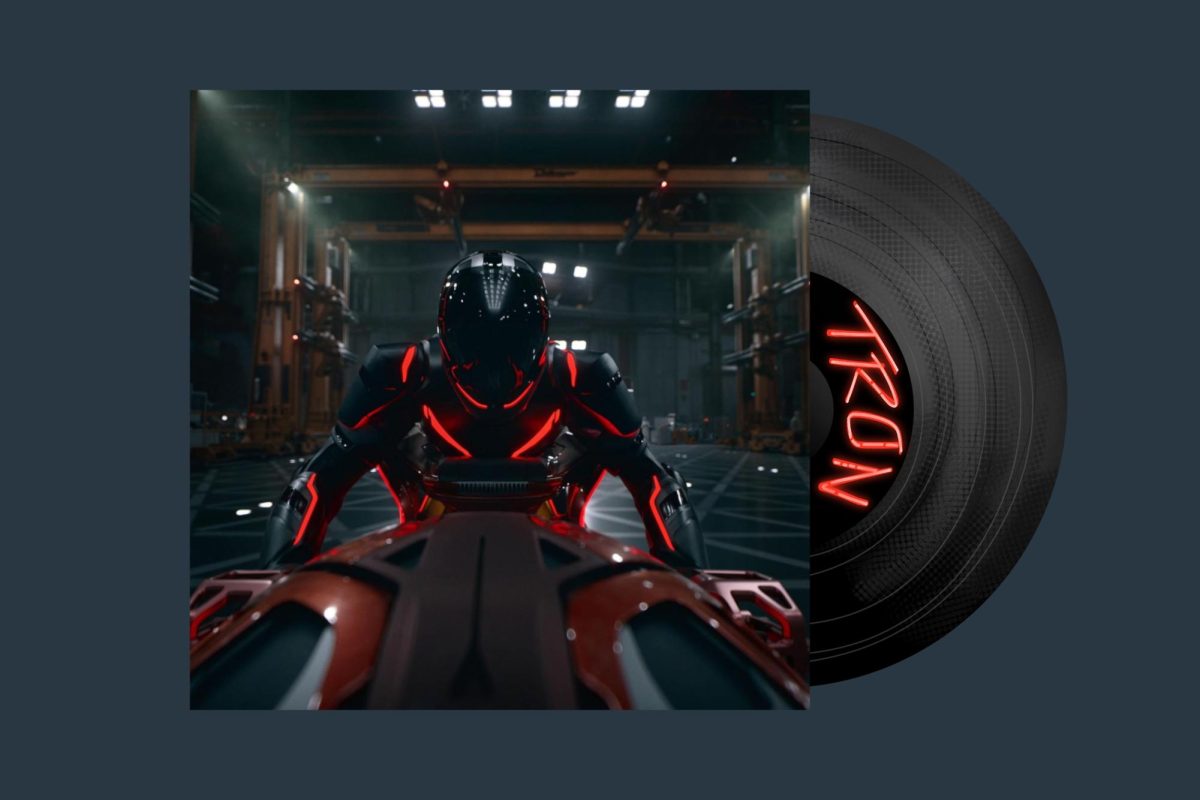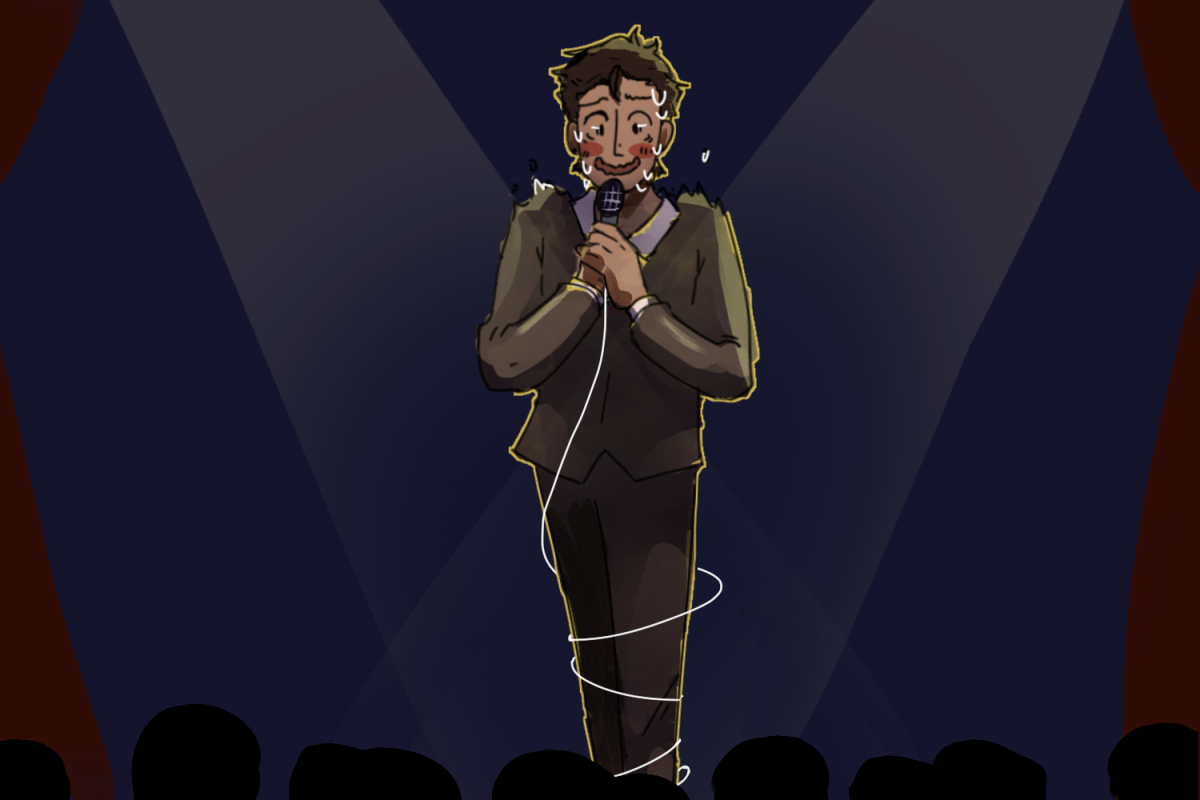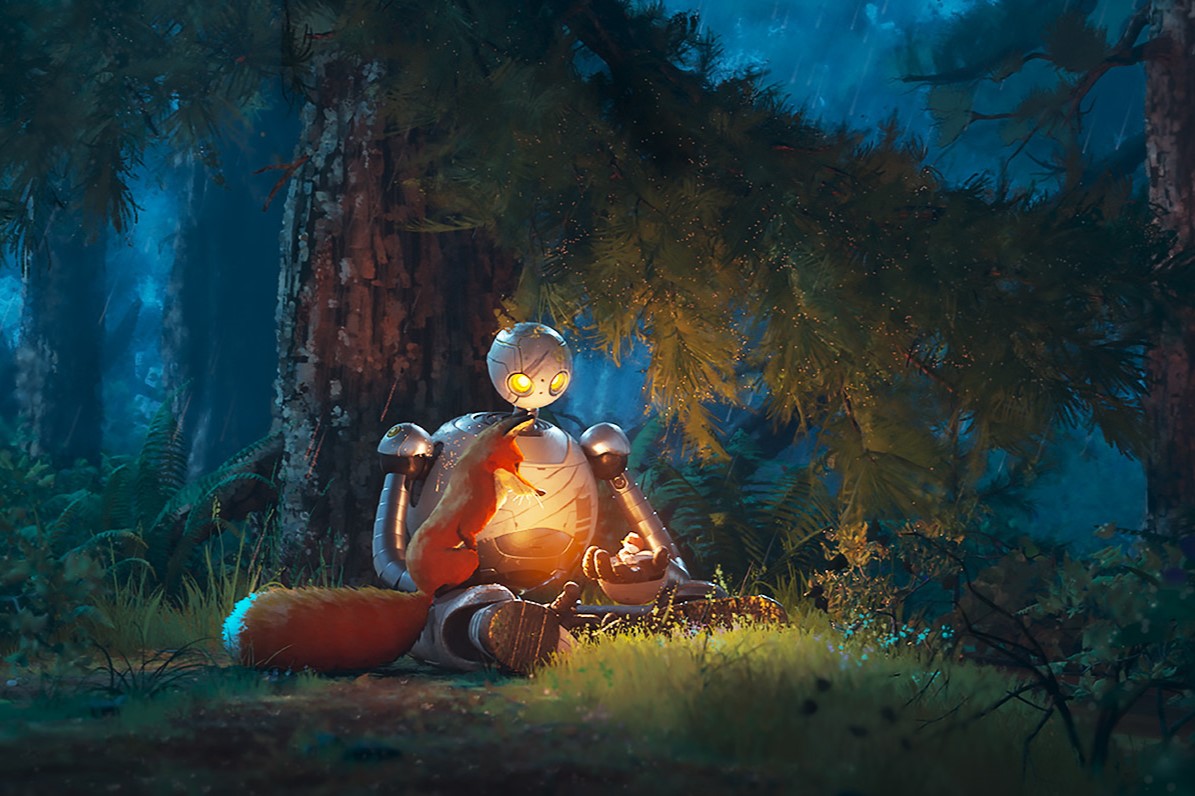Animation is in a precarious spot as of late. Films and other animated projects are facing cancellations, hostile working conditions and constant uncertainty surrounding outsourcing and layoffs, at risk of worsening due to artificial intelligence. Despite that, studios like DreamWorks Animation are attempting to push beyond the mold of photorealism established by the likes of Pixar Animation Studios. Examples include the release of “The Bad Guys” and “Puss in Boots: The Last Wish” in 2022 — and now, “The Wild Robot” was announced to be the last film fully animated in-house at DreamWorks. It’s even more unfortunate that it’s one of the best films DreamWorks has made.
Adapted from Peter Brown’s 2016 novel of the same name, “The Wild Robot” follows ROZZUM unit 7134 (Lupita Nyong’o) after she washes ashore on a verdant, remote island. As she adapts to the natural environment, Roz — which she later names herself — searches for tasks to help humans complete, cementing her as an outsider on the island. Her return to her manufacturers is quickly derailed as Roz accidentally crushes a goose nest, adopting the surviving gosling whom she names Brightbill (Kit Connor). With that, Roz’s task — which also draws the attention of Fink the Fox (Pedro Pascal) — becomes raising Brightbill to grow, swim and fly by the fall.
While the bare-bones of the story are more than familiar, inviting “The Iron Giant” and “WALL-E” comparisons, its emotional beats are executed exceptionally thanks to their simplicity and sincerity. On top of that, Nyong’o does a ludicrous amount of heavy lifting capturing Roz’s character as she grows and learns throughout the film. Roz shifts from a bot-out-of-water naivete to a more natural, emotional experience as she grapples with the challenges of parenting and finding where she belongs.
Tonally, the story feels “for all ages” in the best ways. In capturing the full breadth of the island, it doesn’t shy away from showing the less forgiving side of nature, while rarely losing sight of its more universal themes like strength in community. One of which is that “kindness is a survival skill.” The poignant dynamics of its main trio shine, and yet, the supporting voice cast also does a superlative job. Some standouts are Catherine O’Hara’s voicing world-weary — and frequently hilarious — opossum mother Pinktail and Matt Berry as a curmudgeonly beaver.
On the animation side of the film, “The Wild Robot” is gorgeous. Much like how the Spider-Verse films melded 3D animation with eye-popping comic-book flair, “The Wild Robot” synthesizes the natural environments that comprise much of the setting with an almost impressionistic stylization. Everything from the moon and the island’s largest mountains to the smallest surfaces, like moss on rock faces or ears of corn in a futuristic farm, are all rendered in painterly detail, and virtually every scene pops thanks to the lush, vibrant color palettes and soft edges. The pink shades of a sunset mix in with the blues and orange of a fall evening, a snowstorm is accentuated by bold blues and grays and all the greenery in the film is downright therapeutic for the eyes.
The film’s captivating visual direction also lets first-time feature director Chris Sanders flex his long tenure working with the medium, going back as far as “Lilo & Stitch” and “How to Train Your Dragon.” In terms of its characters, minimizing the presence of human characters allows the film to fully run wild with the variety of movements, gaits and body language of the animals residing on the island. No other character embodies that freedom more than Roz, whose physical articulation and mimicry of the animals fully pay off as she comes to make the island her home, while also being a source of visual comedy abound.
As a testament to the emotional weight behind the story and score, some of the best scenes in “The Wild Robot” are completely bereft of dialogue, from a kaleidoscope of butterflies flying around Roz to a sequence of winter dawning on the island, and even a super-sped-up montage of Roz sitting still to translate the animals’ language. Kris Bowers’ exuberant score is also a key contributor to this, lending itself equally well to moments of whimsy alongside emotionally heavier and rousing moments alike.
Much like how its heroine adapts to and fully embraces the wilderness, “The Wild Robot” brings all these elements together seamlessly and takes its own confident steps forward — that’s just the spirit of animation that the world needs more of.
Contact Kaleo Zhu at [email protected].






















































































































































